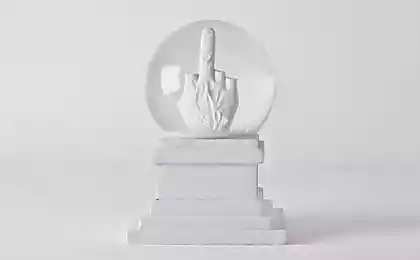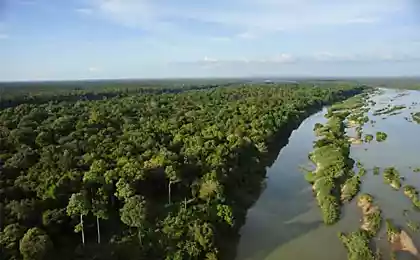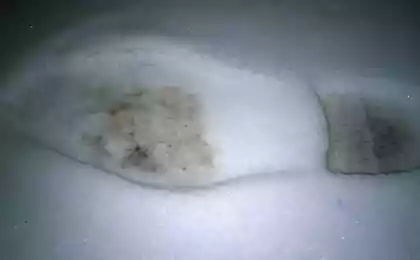471
Shrimp - shocking facts about your favorite treat
Shrimp, one of the most favorite delicacies among seafood. They are so delicious! Why do we have to give them up!
But while our grocery stores are filled with bags of cheap frozen shrimp, behind the scenes, there are processes of learning which you will not want more than to touch them.

As you know, most of the shrimp no longer a catch in the seas and oceans, as often shown in the advertisement, they are cultured in the coastal basins where tides are upgrading the water and wash away the waste in the sea.
These pools are difficult to dismiss as pure, they are filled with heavy doses of various chemicals, including urea, superphosphates, and diesel fuel. There shrimp treated with pesticides, antibiotics (some of them banned in developed countries), means for baiting fish, based on chlorine, sodium tripolyphosphate, borax and caustic soda.

Shrimp farms have destroyed, according to various estimates, about 38% of mangrove forests in the world, to provide a continuous flow of shrimp in our supermarkets, and the damage is permanent.
Moreover, mangrove forests do not recover shortly after the closure of production, but all the surrounding areas turn into wastelands. According to research at Yale University, industrial shrimp cultivation has made some areas of Bangladesh the people's lives: "the Introduction of brackish water Civitavecchia... has led to massive soil erosion and ecological crisis throughout the region."

"In order to obtain 1 kg of shrimp need to cut 5 sq. km. of mangrove forests. This land typically depleted within 10 years and will be the next forty years. Even deforestation from livestock production compared to the shrimp farms looks safe," says Stephen Messenger.
If you have been able to find wild shrimp that are fished in the crystal clear waters of the seas and oceans, and they are probably a lot better for your health, for the ecology of this complete nightmare. In catching each pound of shrimp, deepwater trollery take the lives of 2 to 20 kg of "bycatch" (unwanted fish, which trayler accidentally dipped mesh). Trawling is comparable to bulldozing the grinding of an entire forest to catch a bird of the same species. Bycatch includes sharks, rays, starfish, sea turtles and more. In that time, trawling of shrimp accounts for only 2% of the world catch of fish, he is responsible for a third of the global bycatch. It then just thrown overboard.
As for health risks, the majority of shrimp is not verified by any Standards. When the researchers tested imported ready-to-eat shrimp, they found 162 separate species of bacteria with resistance to 10 different antibiotics.
Probably the only safe way today to eat shrimp is to catch them yourself in the handicraft way. Better yet, just stop eating shrimp. Soon manufacturing standards will not change significantly, and buying shrimp only perpetuates this awful system; and it is unlikely that manufacturing will change, if demand remains at current levels.published
P. S. And remember, only by changing their consumption — together we change the world! ©
Source: telegraf.com.ua/zhizn/zdorove/2373742-shokiruyushhie-faktyi-o-magazinnyih-krevetkah.html
But while our grocery stores are filled with bags of cheap frozen shrimp, behind the scenes, there are processes of learning which you will not want more than to touch them.

As you know, most of the shrimp no longer a catch in the seas and oceans, as often shown in the advertisement, they are cultured in the coastal basins where tides are upgrading the water and wash away the waste in the sea.
These pools are difficult to dismiss as pure, they are filled with heavy doses of various chemicals, including urea, superphosphates, and diesel fuel. There shrimp treated with pesticides, antibiotics (some of them banned in developed countries), means for baiting fish, based on chlorine, sodium tripolyphosphate, borax and caustic soda.

Shrimp farms have destroyed, according to various estimates, about 38% of mangrove forests in the world, to provide a continuous flow of shrimp in our supermarkets, and the damage is permanent.
Moreover, mangrove forests do not recover shortly after the closure of production, but all the surrounding areas turn into wastelands. According to research at Yale University, industrial shrimp cultivation has made some areas of Bangladesh the people's lives: "the Introduction of brackish water Civitavecchia... has led to massive soil erosion and ecological crisis throughout the region."

"In order to obtain 1 kg of shrimp need to cut 5 sq. km. of mangrove forests. This land typically depleted within 10 years and will be the next forty years. Even deforestation from livestock production compared to the shrimp farms looks safe," says Stephen Messenger.
If you have been able to find wild shrimp that are fished in the crystal clear waters of the seas and oceans, and they are probably a lot better for your health, for the ecology of this complete nightmare. In catching each pound of shrimp, deepwater trollery take the lives of 2 to 20 kg of "bycatch" (unwanted fish, which trayler accidentally dipped mesh). Trawling is comparable to bulldozing the grinding of an entire forest to catch a bird of the same species. Bycatch includes sharks, rays, starfish, sea turtles and more. In that time, trawling of shrimp accounts for only 2% of the world catch of fish, he is responsible for a third of the global bycatch. It then just thrown overboard.
As for health risks, the majority of shrimp is not verified by any Standards. When the researchers tested imported ready-to-eat shrimp, they found 162 separate species of bacteria with resistance to 10 different antibiotics.
Probably the only safe way today to eat shrimp is to catch them yourself in the handicraft way. Better yet, just stop eating shrimp. Soon manufacturing standards will not change significantly, and buying shrimp only perpetuates this awful system; and it is unlikely that manufacturing will change, if demand remains at current levels.published
P. S. And remember, only by changing their consumption — together we change the world! ©
Source: telegraf.com.ua/zhizn/zdorove/2373742-shokiruyushhie-faktyi-o-magazinnyih-krevetkah.html























